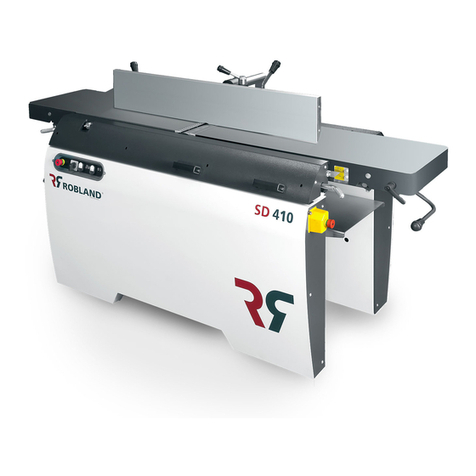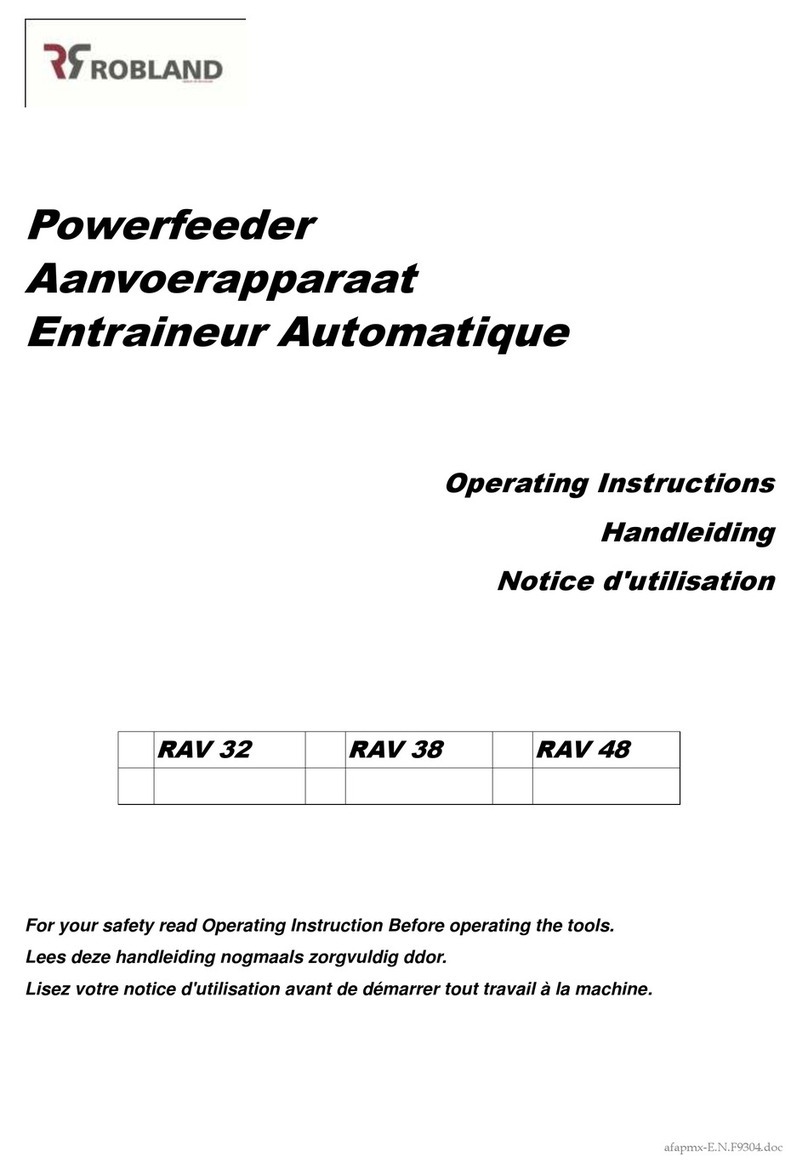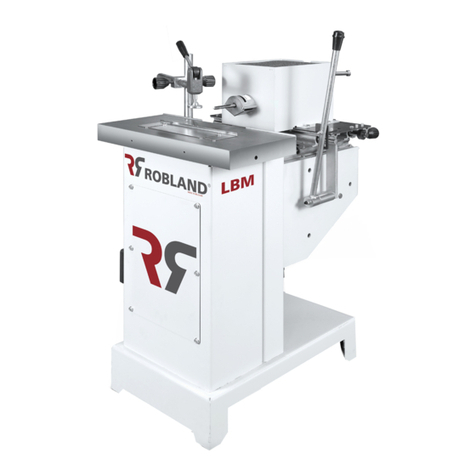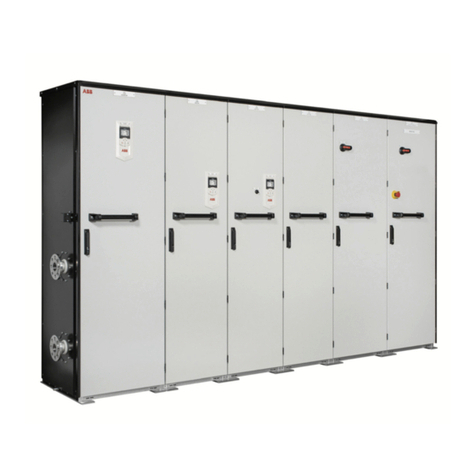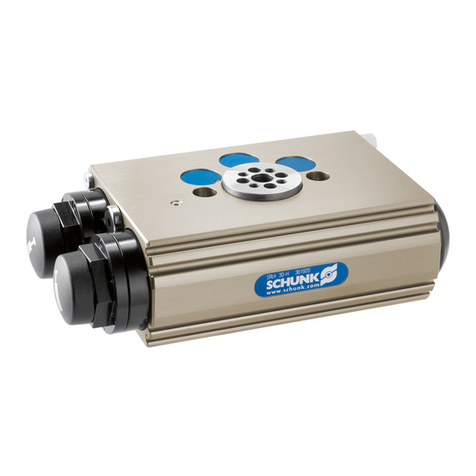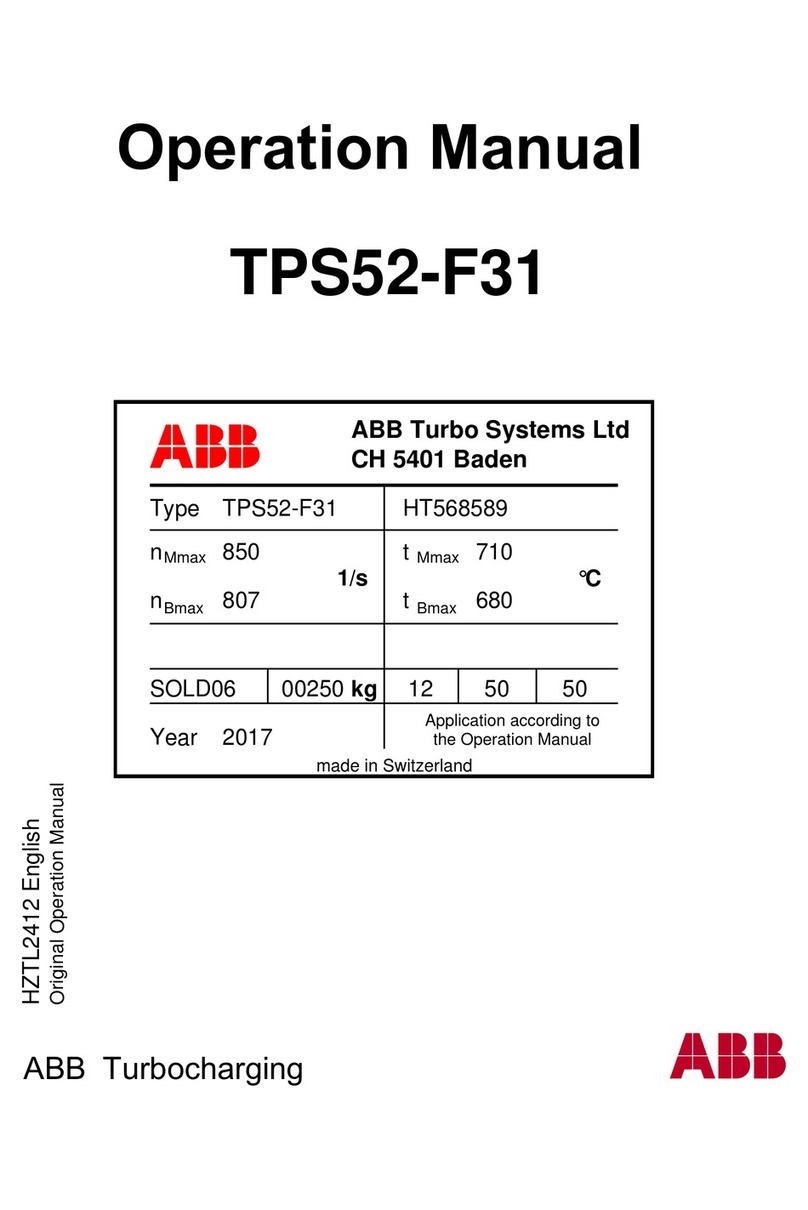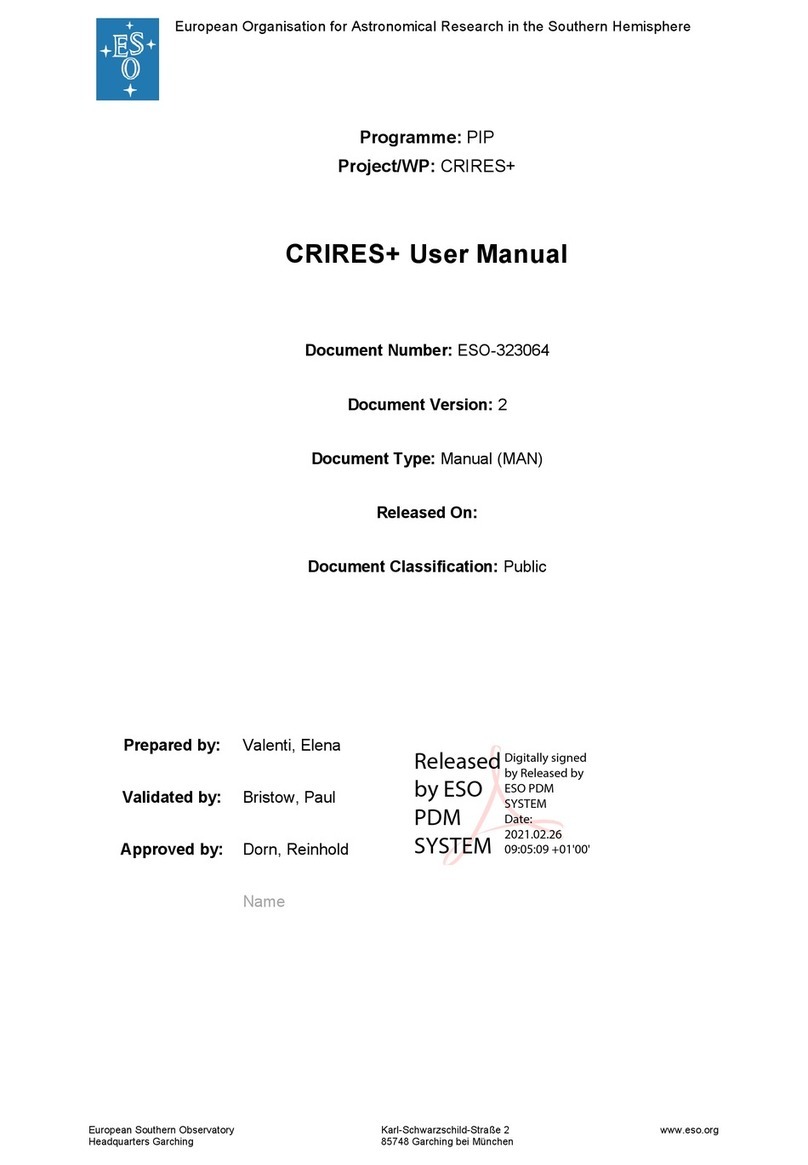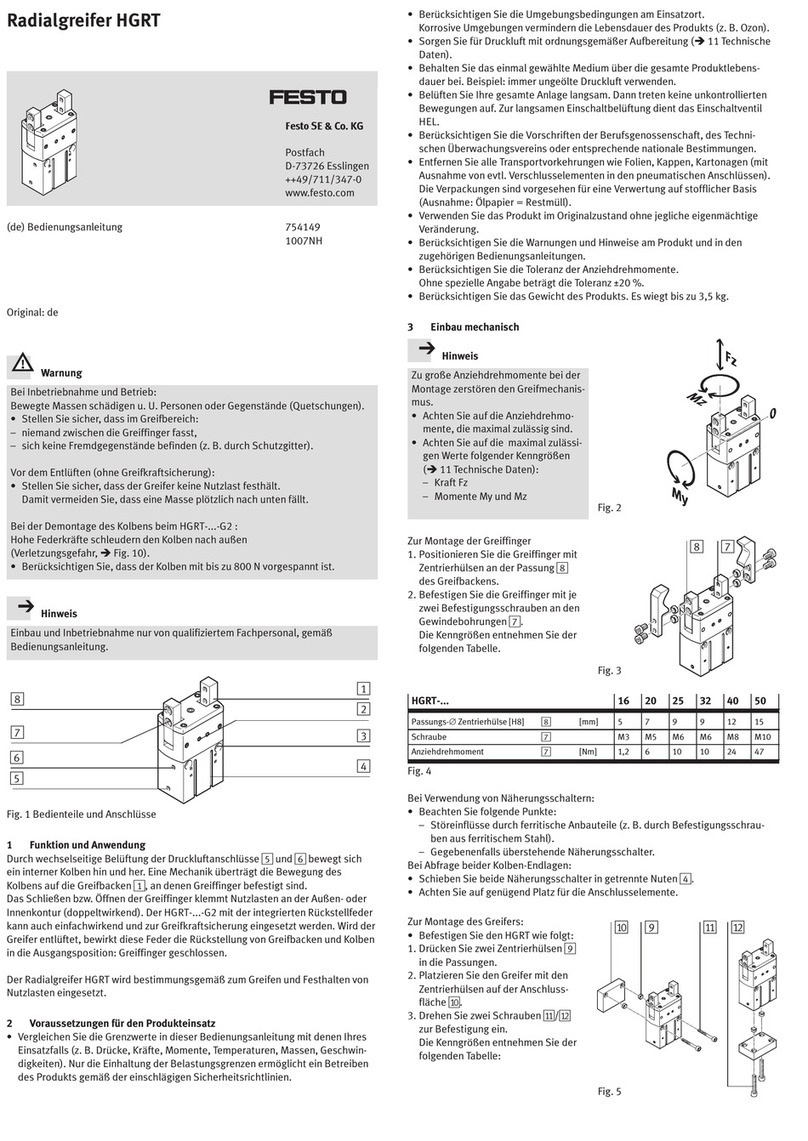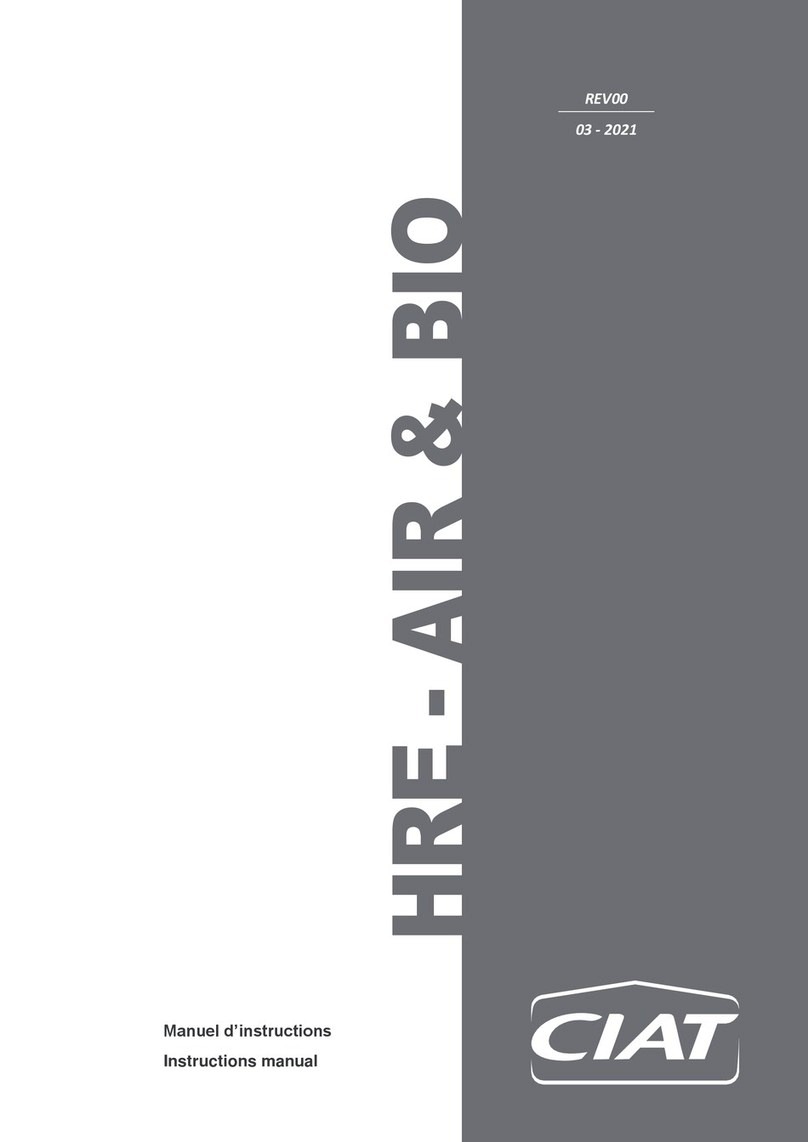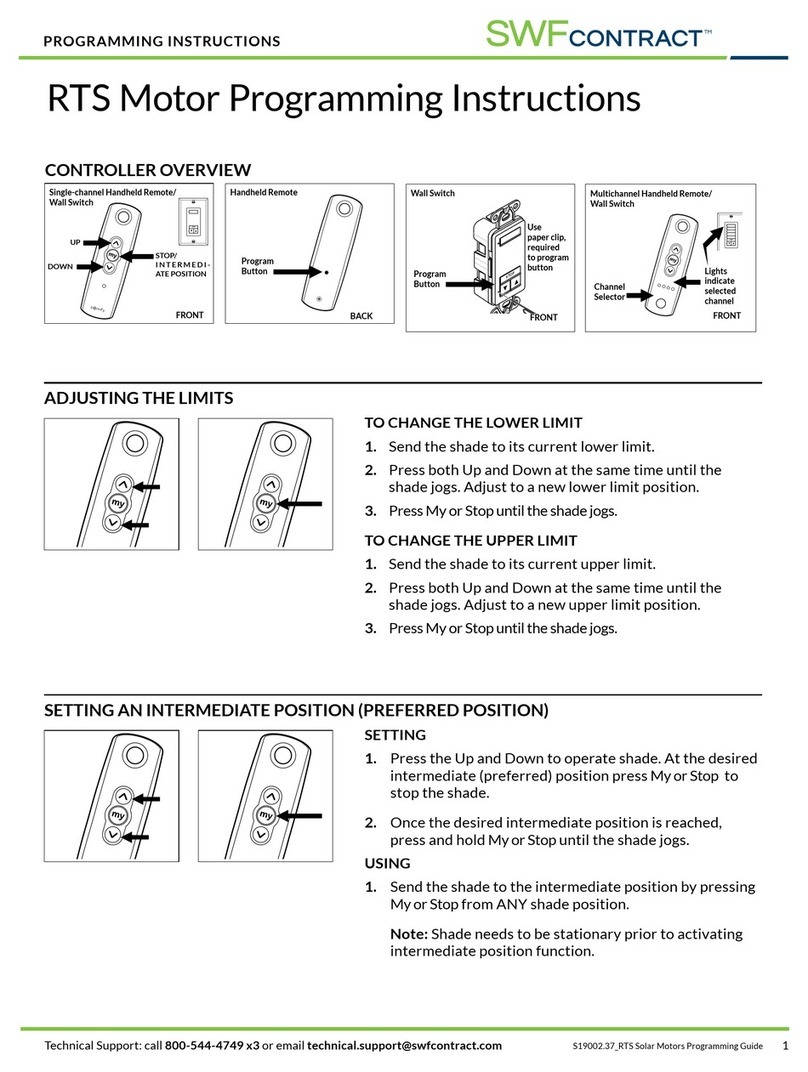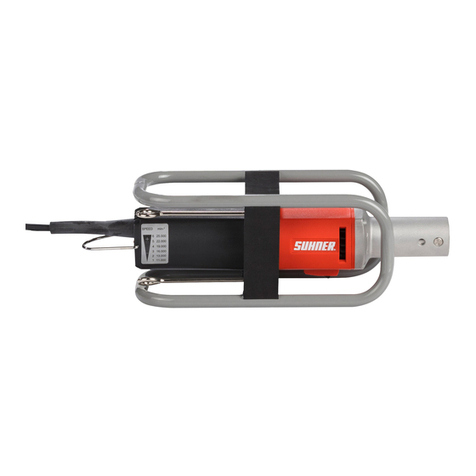Robland D 630 User manual

Contents
General informations
Safety instructions
Danger list
Accoustic and dust emission levels
Normal and prohibited use
Technical specifications
General dimensions of the machine
Transportation of the machine
Electrical connections
Starting up the machine
Dust extraction
Changing and setting of the planer knives
Safety instructions for the thicknesser
Adjusting the depth of cut on the thicknesser
Calibratiion of the digital read out
Thicknesser feed
Friction reduction roller in the table (optional)
Maintenance and lubrication of the machine
Change and tensionning of the belts
Tensionning of the drive chains
Problems and trouble shooting
Electrical components spares list
Instruction manual ‘ELGO’
Wiring diagrams
1
2
3
3
4
5
6
7
9
10
11
12
12
13
13
14
15
16
16
17
18
18
19
20
24

General information
Name and adress of manufacterer : NV WERKHUIZEN LANDUYT
Kolvestraat44
B - 8000 BRUGGE
BELGIE
The model has been examined by the following organisation:
L’INSTITUT NATIONAL DE RECHERCHE ET DE SECURITE I.N.R.S.
Avenue de Bourgogne - BP27 - F 54501 Vandoeuvre Cedex - France
Description of the machine:THICKNESSER D-630
Date of construction of the machine: from 2002 on
Option: Tersa Monobloc cutterbloc
Table friction reduction rollers
7,5 and 11 kW main motor
Sectional infeed roller
Rubber rollers
Rear table extension
Always mention the following items on your order:
- Type of machine
- Serial number of the manual
- Part number and quantity
- Your reference and correct phone and fax number
2

Safety and maintenance instructions
Woodworking is a pleasant job that will give you a lot of satisfaction.
Nevertheless, working with a machine requires constant attention and care. Therefore,
for your own safety, pay attention to the instructions summarised in this chapter.
- The machine can only be used safely if the operator strictly follows the operating
and safety instructions.
- It is absolutely essential to read this manual before using the machine so you know
how to the machine works and what its limitations are.
- Always make sure that all safety devices are fitted to the machine and that the
machine is connected to a dust extraction system.
- Provide sufficient space arround the machine and a good lighting of the workshop.
- When changing tools or when doing a maintenance job, the machine must always be
disconnected from its power supply.
- Knives and tools which are not correctly sharpened, or in a bad shape, not only
diminish the quality of the work, but also increase the risk of accidents.
- Always wear suitable clothing, loose or torn clothes are very dangerous.
- Keep children away from the machine and out of the workshop.
-To avoid damaging your hearing we recommend to wear ear protection, when
working with the machine.
Attention
Working with woodworking machines can be extremely dangerous if the safety
instructions are not followed.
It is recommended to systematically use the safety equipment installed on your
machine.
2. Stability of the machine
In order to be able to use the machine safely, it is essential to place it stable on the
ground.
3. Adjustment and installation
Disconnect the machine from the power supply before every adjustment.
The recommendations of the machine manufacterer must be followed when adjusting
and installing the tools.
The tools must be correctly sharpened and installed.
4. Handling of tools
In order to avoid severe cuts, safety measurements, such as the wear of safety gloves,
must be taken when handling planer knives, or other tools you are using in your
workshop.
Even blunt tools can cause serious injuries to your hands.
3

Accoustic and dust emission levels
The values given are the emission levels; these are not necessary the levels at which
the operator can work safely.
Alhough there is a link between the emission values and the exposion level, it cannot
be used in a reliable way to determine if supplementary measures should be taken.
Noise information
- Measurements as per ISO Norm 7960; Annexe D
Workpost under Level continuous Level accoustic Max. value
load pressure as per index power accoustic pressure
A as per index C
dB(A) dB(A) (MW) dB
Thicknessing 83 97 (5) < 130
Dust emission
The dust emission examination has been carried out by the following approved body:
Prüfinstitut für Holzstaubmessungen
Institut für Werkzeugmaschinen
Universität Stuttgart, Germany
Measurements as per DIN 933 893 ( GS-HO- 05 )
Measurements show that the TRK- value of 2mg/m3 has not been exeeded.
Notification number and date : 08/03/1998 FPH-AZ : 029/98
4

Normal and prohibited use
The machine is designed for the following work and is equiped with protective
devices for these processes only.
It is not designed to work materials such as ferrous and non-ferrous metals, work
different from that stated below is prohibited.
NORMAL USE
- thicknessing on the thicknesser unit;
PROHIBITED USE
- the use of other materials than wood, such as ferrous or non-ferrous materials.
REMAINING RISKS
- unintentional contact of the hands with the running cutter block;
- workpiece kickback;
- tipping over of the workpiece due to insufficient support;
- ejection of knots, ect.
The above does not negate the fact that extra safety equipment such as safety gloves
and ear protection must be used.
5

Technical Specifications
Voltage
V 400 / 230
Motor power
kW 5,5 option 7,5 and 11
Motor power up and down table kW 0,55
Motor power feeding kW 0,75
Weight kg 950
Total weight machine crated kg 1100
Dimensions machine crate LxWxH mm 1590x1340x1235
Diameter cutter block mm 120
Knives
4
Dimensions knives mm 630x30x3
Cutter block speed
RPM 5200
Maximum chip removal single pass mm 8
Serrated infeed roller 1, diameter 70 mm
Outfeed rollers 2, diameter 70 mm
Sectional infeed roller 1 OPTION
Rubber rollers 2 OPTION
Chip breakers and pressures (hold down) on both in-and outfeed standard
TERSA cutter block, reversible knives OPTION
Dimensions thicknesser table mm 630x1160
Thicknesser capacity mm 300
Variable feeding speed by frequenty variator m/min from 5 to 22 m/min.
standard
Friction reduction rolls in the thicknesser table 1 or 2 OPTION
Digital read-out thicknesser standard
Rise and fall thicknesser table 2 speeds slow/fast standard
Safety micro switch on hood standard
Dust suction outlet mm 160
Machine CE standard
3 V-belt main motor drive system standard
Double drive chains and sprockets on all arbors and chain tensioners standard
Double bearings on main cutter block, and in-and outfeed rollers standard
Magnetic knive setter standard
gy
Automatic “Star-Delta” starter for 5,5 kW and 7.5 kWmotor OPTION
Automatic “Star-Delta” starter for 11 kW motor standard
6

General dimensions
7

8

Transportation of the machine (fig. 1, 1.1)
Depending the method of transport or shipping, you will receive the machine in a
crate or on transport blocks.
Remove the sides of the crate and cover and put the hoisting hooks as shown in fig, 1
and 1.1
The machine can be lifted with a small crane, or a forklift, but severe shocks must be
avoided.
Place the machine on a concrete base, and level the machine perfectly horizontally in
both directions.
The machine is construted in such a manner that it is not necessary to fix it to the
ground, but if you wish to do so, fixing bolts must be introduced through the leveling
bolts in the base plates.
Please find the dimensions of the base plate in the technical data drawing.
fig. 1
fig.1.1
9

11
Electrical connections (fig. 2, 2.2)
The electrical connections must be carried out by a qualified electrician who is able to
calculate the exact needed wire section and caliber of fuses.
- Check that the mains voltage of your machine corresponds with the voltage in your
workshop.
- Open the electrical connection box at the side of the machine (fig, 2).
- Connect the three phases to the terminals marked L1, L2, L3 (fig,2 bis).
- The neutral conductor (blue) it is to be connected to the terminal N.
- Connect the earthing (green-yellow) to the terminal marked with the earth symbol
PE.
ATTENTION:
- Check first if the spindle runs free and if all protections are mounted before starting
up the machine.
- If the rotation direction of the spindle is not correct, the leads L1, and L2 must be
exchanged.
- The rotation direction of the spindle is anti-clockwise: left, seen from the side of the
machine with the dust chute open.
ATTENTION:
The machine is equipped with overload protection, and should the motor be shut-off
by this protection, it is necessary to wait for a few minutes untill the overload has
cooled down, and resets itself.
fig.2
fig.2.2
3 phases L,L2,L3
Neutral N
Earth
10

Starting up the machine (fig. 3)
Turn the main switch (Q1) to position “1” in order to put the machine under tension.
To start up the motor push set the ‘Star-Delta’ switch in the ‘Star’ position and push
the button S1, after about 8 sec. turn the switch to the ‘Delta’ position. Fot the
optional ‘Auto-Star-Delta’ push the start button (S1), the motor starts-up
automatically in Star-Delta. By pushing the stop button (AU1) the main motor is
automatically stopped, and slowed down by the automatic brake within 10 seconds.
The feeding motor can be started by pushing the button (POT) of the potentiometer,
and by turning the same button the feeding speed can be chosen from 5 to 22 meters
per minute.
To stop the feeding motor, push the same button (POT).
All motors are stopped automatically when the emergency stop button (AU1) is used;
Make sure the brake release switch (S4.1 ) is set at position O and the warning light
inside the same button is not lit, in order to be able to start up the machine.
When this same switch is pushed during the run of the machine the motors will
automatically be stopped.
WARNING:
All fuses can be found inside the electrical cabinet, and each time this cabinet is
opened the machine must be disconnected from the main power supply.
11

Dust extraction
For your own health and to avoid fire risk and dust explosion, it is recommended to
connect the machine to a dust extraction system.
The 160 mm outlet on the dust chute need to be connected to a dust extractor,
powerfull enough to obtain an airflow of at least 20 m/sec., measured at the outlet on
the machine
Changing and setting of the planer knives (fig. 4)
In order to turn the planer arbor by hand, push the brake release switch (fig.3, S4.1)
the warning light L1 will light.
Now the dust-safety hood can be opened by pulling the handle situated at the side of
the hood.
To avoid serious injuries when handling planer knives, the wear of safety gloves
is highly recommended: even blunt knives can cause serious damage to your
hands !.
Make sure both planer knives and jib strips are well cleaned before putting them into
the slots in the planer arbor.
Take care of the springs underneath the knives, and see to it that they do not stay
blocked inside their seats in the arbor.
Now put the cleaned planer knive into the groove, pushing the knive down with the
adjustment gauge(fig.4)), and tighten the bolts.
Repeat above for the other planer knives.
Make sure all knives are set at exactly the same height.
Before starting up the machine check again if all bolts are well tightened, and then
push the brake release switch (fig.3,S4.1) the warning light L1 must dim.
fig. 4
Magnetic knife
setter jigs
12

Safety measures on the thicknesser
- Check iff the planer knifes are well tighened and secured. When this is not the case
the knifes by the centrifugal force will be ejected from the cutter block.
It is absolutely essential to read this manual before using the machine so you
know how to the machine works and what its limitations are.
- Always make sure that all safety devices are fitted to the machine and that the
machine is connected to a dust extraction system.
- Always wear suitable clothing, loose or torn clothes are very dangerous.
- Keep children away from the machine and out of the workshop.
-To avoid damaging your hearing we recommend to wear ear protection, when
working with the machine.
- The height of a planer knife must be 20 mm minimum!
Adjusting the depth of cut on the thicknesser (fig. 5)
The raise and fall of the thicknesser table is motor driven at 2 speeds up-and down by
pushing the switch S5 for the rise and fall at fast speed, the button S7 for the slow
speed rise and fall.
The position of the thicknesser table can be set at 1/10 mm
fig.5
position of the table
13

Calibration of the digital read out (fig. 6)
It is highly recommended that each time the planer knives are changed, the digital
read out is calibrated, this to avoid measurement errors.
Calibration is done as follows:
- set the thicknesser table at a random height and thickness a sample.
- now measure exactly the thickness of the sample.
- now the digital read out has to be set at the same measure, and this can be
achieved as follows: press simultaneously the buttons F and SET on the read-out:
Now the read-out begins to count up at 3 progressive speed rates:
- Rate 1: at 1Hz for 10 sec.
- Rate 2: at 10 Hz for 10 sec.
- Rate 3: at 1000 Hz for as long as the 2 buttons F and SET are held.
- Shortly before the desired value is reached, release the two buttons and press the
same two buttons so as to approach the desired value with the slowest rateof 1 Hz.
The thicknessser now is calibrated over the full 300 mm capacity.
To set the read-out at 0, simultaneously press Set and RESET.
fig.6
Important
Before starting to work on the thicknesser always ensure that the anti-kickback
protection fingers are clean and hang down freely in position under their own weight.
These anti-kickback fingers should be inspected on a regular base, and kept clean and
free of any resin deposits whatsoever.
Ensure the correct position and locking of the dust chute.
Roller supports should be used when long workpieces are machined.
Ensure the ticknesser table is well cleaned, since a smooth table surface is essential
for good operation of the thicknesser.
and RESET.
14
F

Thicknesser feed (fig. 7)
The machine is equipped with an frequency variator thus enabling an feeding speed
of 5 to 22 m/min.
The feeding motor is started-up by pushing the button of the potentiometer POT, and
by turning the same button a feeding speed can be selected between 5 and 22 meter
per minute, changing over from one speed to an other can be done without having to
stop the feeding motor.
In case of overloading of the feeding mechanism the feeding motor must be
disengaged immediately by pushing the button of the potentiometer POT and the
main cutterblock motor by pushing the emergency stop button (fig. 3, AU1) on the
switch panel.
After reducing the depth of cut on the thicknesser, the motor can be started up again.
fig.7
Emer
g
enc
y
sto
p
Potentiometer feedin
g
s
p
eed
Feeding speed reset in case of
overload
Feeding speed frequency
variator warnin
g
li
g
ht
Main motor start
15

Optional thicknesser table rolls (fig.8)
As an option the machine can be equipped with 1 or 2 rolls in the table.
In order to lower the rolls under the table simply pull the handle and lower, as
indicated on the pictogram.
fig.8
Maintenance
Attention: Always disconnect the machine from its power supply before starting
all maintenance works !!
The interior parts of the machine must be cleaned regulary in order to avoid an
accumulation of dust and woodchips.
Any possible deposit of resin on the various parts of the machine must be taken away
with a piece of cloth and a little solvent (petrol, kerosine or other product)
Never smoke or have any naked flame near the machine when using
inflammable products, this to prevent risk of fire and serious burns for the
operator !!
After removing the front, back, and side cover plates, all machine parts which need
maintenance are exposed.
The thread bars and posts of the table and the drive chains of both rise and fall of the
table and the feeding mechanism must be cleaned on a monthly base using a thin oil.
The use of a dust extractor system will most certainly extend the life of your machine.
The life of the motors can be extended by blowing out saw dust from the cooling fan
and from the motor body itself.
16

Change and tensionning of the belts (fig. 9)
The belts of the main motor can be tensionned as follows:
Unlock the 3 bolts which holds the motor-support bracket onto the frame and wind the
belt spanner bolt up or down in order to tension the belts.
After belt tensionning is done, lock again the 3bolts.
The drive belts are of the type: SPA 1750.
fig.9
Motor fixin
g
bolts
Belt spanner bolt
17

Tensionning the drive chain (fig.10)
The drive chains need no tensionning since the tension is always assured by an idle
chain spanner.
To change the drive chain, pull the chain spanner backwards and remove the chain
from the sprockets and remove the chains.
After the chain is replaced always assure the chain spanner is well placed onto the
chain.
To change the drive chain for the rise and fall of the table, pull the chain spanner lever
to the back and remove the chain.
Attention: do not turn the sprockets on one of the 4 posts of the table whilest
chainging the chain; this will lead into a disorder of the parallelism of the table!
Problems and troubleshooting
1. The machine does not start when the start button is activated :
- workshop main fuse is switched off: power cut, power shortage, or general overload.
- main switch off: put switch on “1”.
2. Reduction of cutting speed when working :
- belt tension not correct: tension the belt
- motor overload due to incorrect feed rate: reduce the feed rate
- blunt tools: sharpen tools
3. Vibration of the machine :
- worn or damaged belt: replace the belt
- overtensionned belt: loosen belt
4. Thermal overload does not re-arm automatically after shut-off and cooling down
period :
- overload is not set on automatic reset, or the overload is faulty: set on automatic, or
replace
If you cannot solve the problem yourself or you do not find your problem in this list,
please contact your Robland dealer.
Chain s
p
ann lever
18

Electrical components spares list
Q1 Main switch
F1/F2/F3 Fuses 40 Amp AM
F11/F12 Fuses transformer primary 1 Amp AM
T1 Transformer 230V/24V 200VA
F13 Fuse transformer secundary 6A GI, (fast)
eb1 Thermal overload 12,5A
AU1 Emergency stop frame
CAPOT Safety switch dust hood
AU2 Safety switch on switch panel
S1 Start main motor
S4.1 Brake release switch brake main motor
L1 Brake release warning light
S4 Brake release switch brake main motor
S5nn Switch table up ‘fast’
S6pp Switch table down ‘fast’
S7nSwitch table up ‘slow’
S8pSwitch table down ‘slow’
T Timer relay automatic ‘star-delta’
KM1 Magnetic starter ‘line’
KM2 Magnetic starter ‘delta’
KM3 Magnetic starter ‘star’
F9/F10 Fuses 6 Amp AM frequency variator FRQ2
L2 Warning light frequency variator overload FRQ2
POT Potentiometer 10K:feeding speed 1 Watt
RESET Overload reset feeding motor
F4/F5/F6 Main motor fuses
YB1 Brake main motor
F14 Fuse 2Amp AM brake main motor
F7/F8 Fuse 6Amp AM frequency variator FRQ1 motor table up-down
M1 Main motor 5,5 kW (option 7,5 and 11 kW)
M2 Motor table up-down 0,55 kW
M3 Motor feeding of the wood 0,75 kW
Elgo Z20 Digital read out table position
19

20
Other manuals for D 630
1
Table of contents
Other Robland Industrial Equipment manuals
Popular Industrial Equipment manuals by other brands

STEELTEC
STEELTEC XWS007 instruction manual
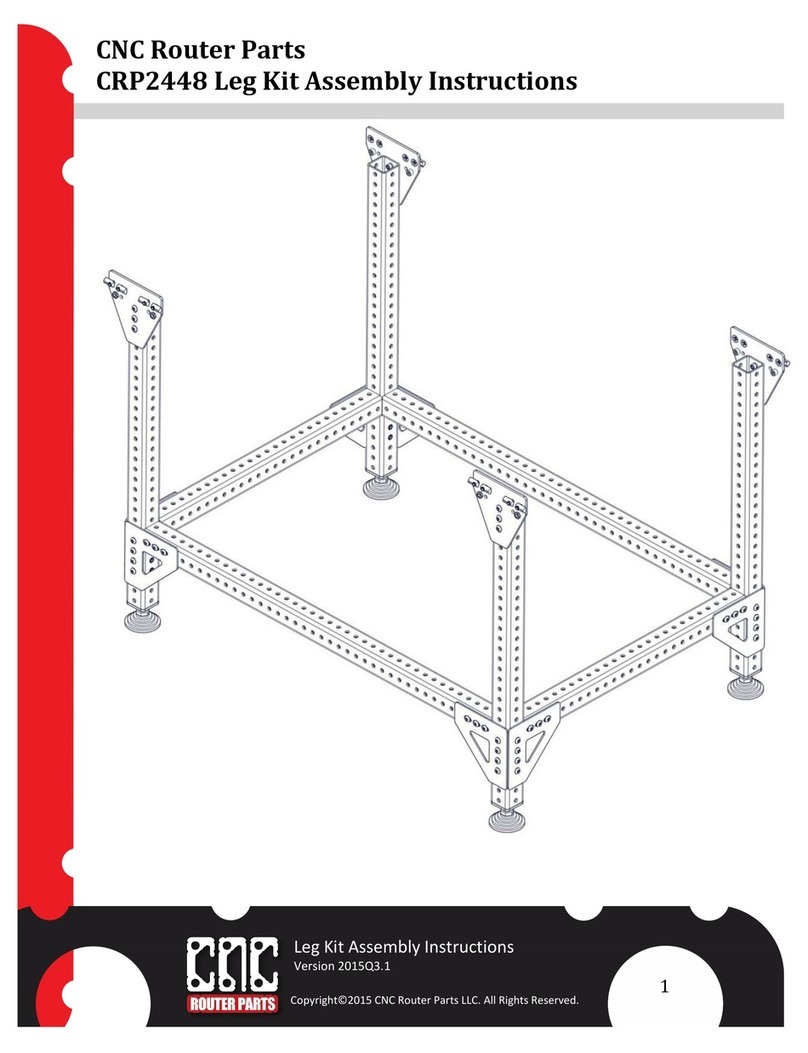
CNC Router Parts
CNC Router Parts CRP2448 Assembly instructions
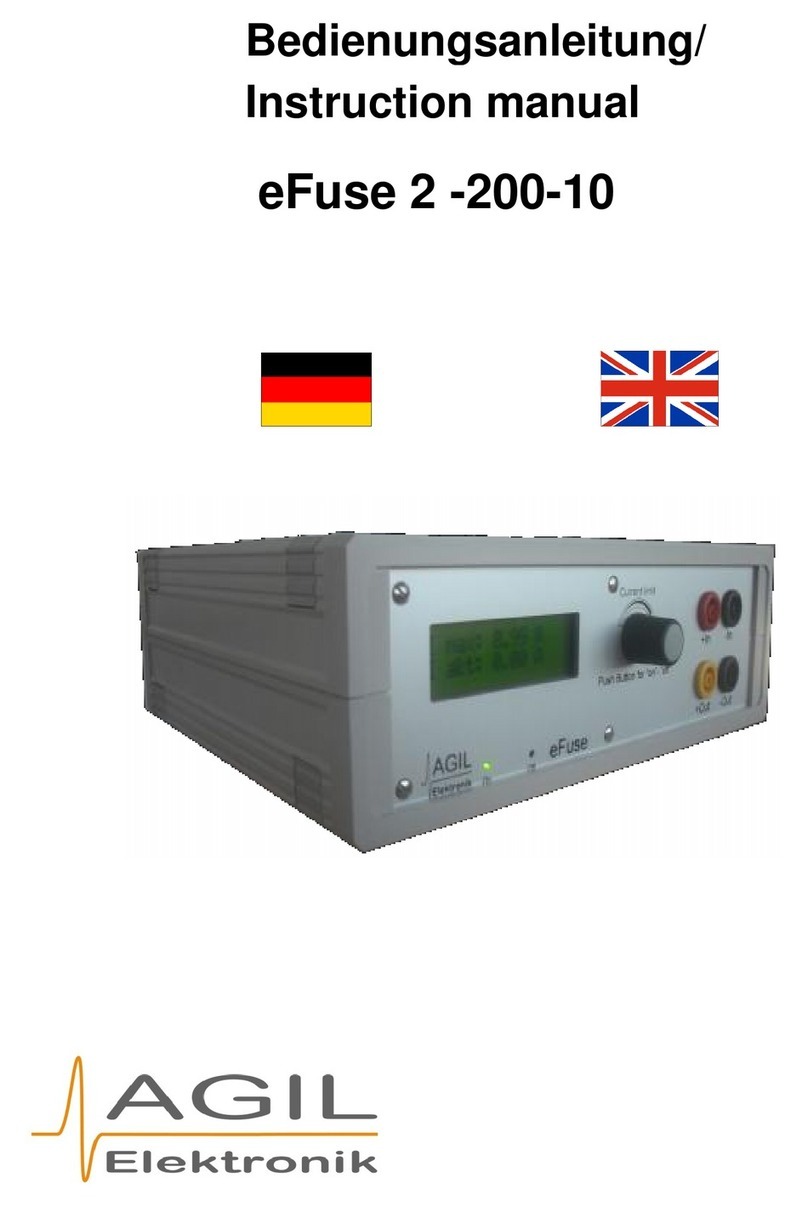
Agil Elektronik
Agil Elektronik eFuse 2-200-10 instruction manual
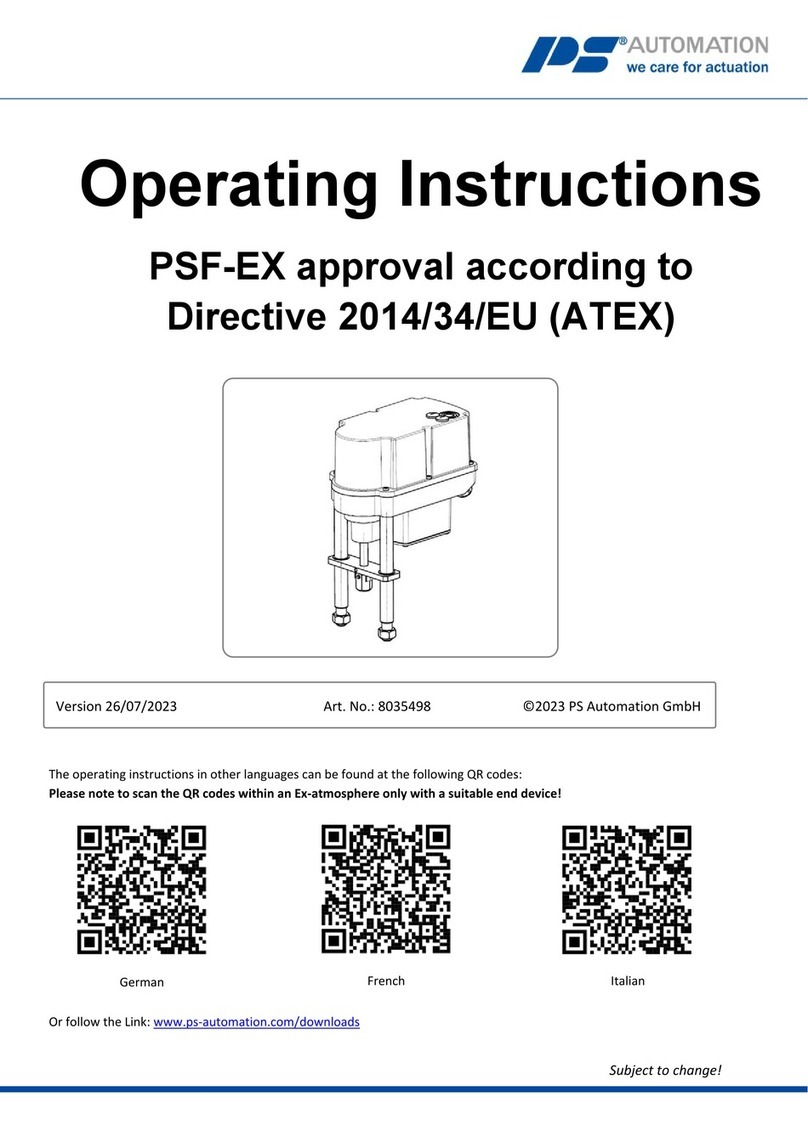
PS Automation
PS Automation PSF-EX operating instructions
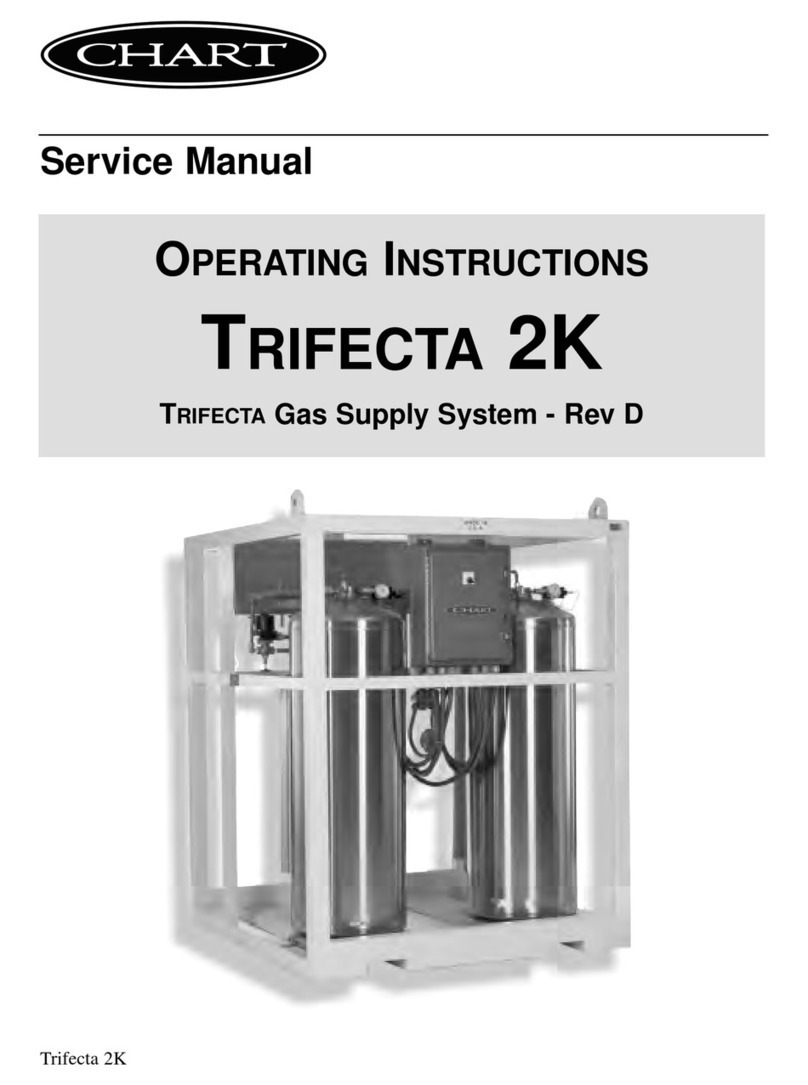
CHART
CHART TRIFECTA 2K Service manual
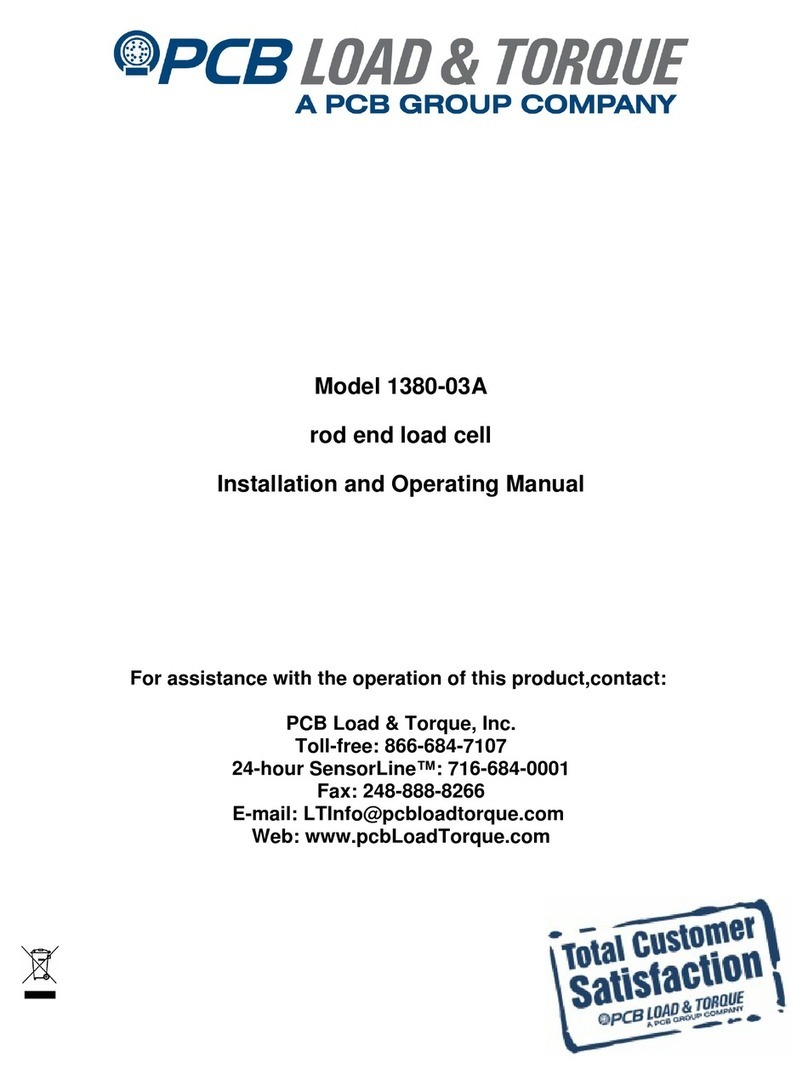
PCB Piezotronics
PCB Piezotronics LOAD & TORQUE 1380-01A Installation and operating manual

